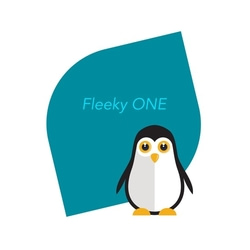
Deepseek AI
DeepSeek is a Chinese artificial intelligence (AI) company that has recently garnered significant attention for its rapid advancements in AI technology. Founded in 2023 as a spin-off from the hedge fund High-Flyer, DeepSeek has developed AI models that rival those of leading American companies like OpenAI and Google.
One of DeepSeek’s notable achievements is the release of its AI model, DeepSeek-R1, which has demonstrated performance comparable to OpenAI’s models. This accomplishment is particularly impressive given that DeepSeek utilized significantly fewer computing resources, highlighting efficient resource utilization and the potential of smaller players in the AI ecosystem.
DeepSeek’s success underscores the rapid progress of Chinese AI startups and their ability to innovate despite challenges such as limited access to advanced computing hardware due to export restrictions. The company’s open-source approach has also contributed to its recognition, with models like DeepSeek-R1 being made available under permissive licenses, allowing for widespread use and collaboration.
While there is no indication of a direct collaboration between DeepSeek and Google, DeepSeek’s advancements have positioned it as a significant player in the global AI landscape, prompting discussions about the evolving dynamics of AI development and competition.
For a more in-depth understanding of DeepSeek’s impact and the broader implications for AI development, you might find the following video informative:
How does Deepseek compare to openAI
DeepSeek, a Chinese AI model, has drawn comparisons to systems like ChatGPT, primarily for its advancements in natural language processing (NLP). While DeepSeek’s full capabilities are still emerging, here’s a side-by-side comparison based on available information:
1. Development and Architecture
- ChatGPT (OpenAI):
- DeepSeek:
- Uses a highly optimized architecture, reportedly achieving comparable results to GPT models while using fewer computational resources.
- Focused on efficiency, potentially due to hardware restrictions imposed by export controls on advanced chips.
2. Language and Cultural Adaptation
- ChatGPT:
- DeepSeek:
- Designed with a focus on Chinese language processing and cultural nuances, making it particularly strong in this domain.
- Reportedly good at understanding and generating responses in Chinese, although it is expanding into other languages.
3. Applications and Use Cases
- ChatGPT:
- Widely used for content generation, coding assistance, brainstorming, and educational purposes.
- Supported by plugins and APIs for integration into apps and tools.
- DeepSeek:
- Initially targeted toward Chinese industries, including finance, education, and healthcare.
- Positioned to address unique challenges in the Chinese market, such as localized search optimization and regulatory compliance.
4. Accessibility and Open Source
- ChatGPT:
- Proprietary, though OpenAI offers APIs and developer tools for integration.
- Significant focus on monetization through subscription plans like ChatGPT Plus.
- DeepSeek:
- Notably open-sourced its core model (DeepSeek-R1), making it accessible for broader development and customization.
- This open-source approach might appeal to businesses and researchers who prefer adaptable AI tools.
5. Computational Efficiency
- ChatGPT:
- Known for its high computational demands, requiring advanced hardware for optimal performance.
- Reflects OpenAI’s access to cutting-edge resources and partnerships.
- DeepSeek:
- Reportedly achieves similar performance using fewer resources, showcasing innovation in efficiency.
- This efficiency could make it more sustainable or accessible for smaller-scale deployments.
6. Regulation and Data Sources
- ChatGPT:
- Developed with global datasets, but faces scrutiny regarding biases and ethical considerations.
- Regularly updated to align with international regulatory frameworks.
- DeepSeek:
- Developed within China’s regulatory framework, ensuring compliance with local data governance rules.
- Likely trained on datasets specific to Chinese contexts, giving it an edge in local markets but potentially limiting global generalization.
Strengths
- ChatGPT:
- Better for global users, particularly in English and multilingual tasks.
- Well-suited for technical assistance, including coding and in-depth research.
- DeepSeek:
- Stronger focus on Chinese linguistic and cultural nuances.
- Open-source approach fosters collaboration and innovation, especially in regions where resource efficiency is key.
Limitations
- ChatGPT:
- May not excel in localized or culturally specific contexts outside its primary dataset focus.
- Proprietary nature limits flexibility for developers seeking to modify core functionalities.
- DeepSeek:
- Potentially less mature in non-Chinese contexts and applications.
- Early-stage adoption means it may lack the widespread ecosystem support that ChatGPT enjoys.
Conclusion
Both ChatGPT and DeepSeek have distinct strengths, making them leaders in their respective niches. ChatGPT remains the go-to tool for global, general-purpose applications, while DeepSeek shows promise in efficiency and specialization, particularly for the Chinese market. If DeepSeek continues to expand its capabilities and languages, it could emerge as a strong competitor in the global AI race.
The future is ahead 😊
Source OpenAI’s ChatGPT Language Model and DALLE – Images Picsart

Invest in your future & learn
Learn affiliate marketing & build your own website.
Heads up! Make sure you sign up using my referral link to get access to my personal coaching and all features.
👉 Sign Up




